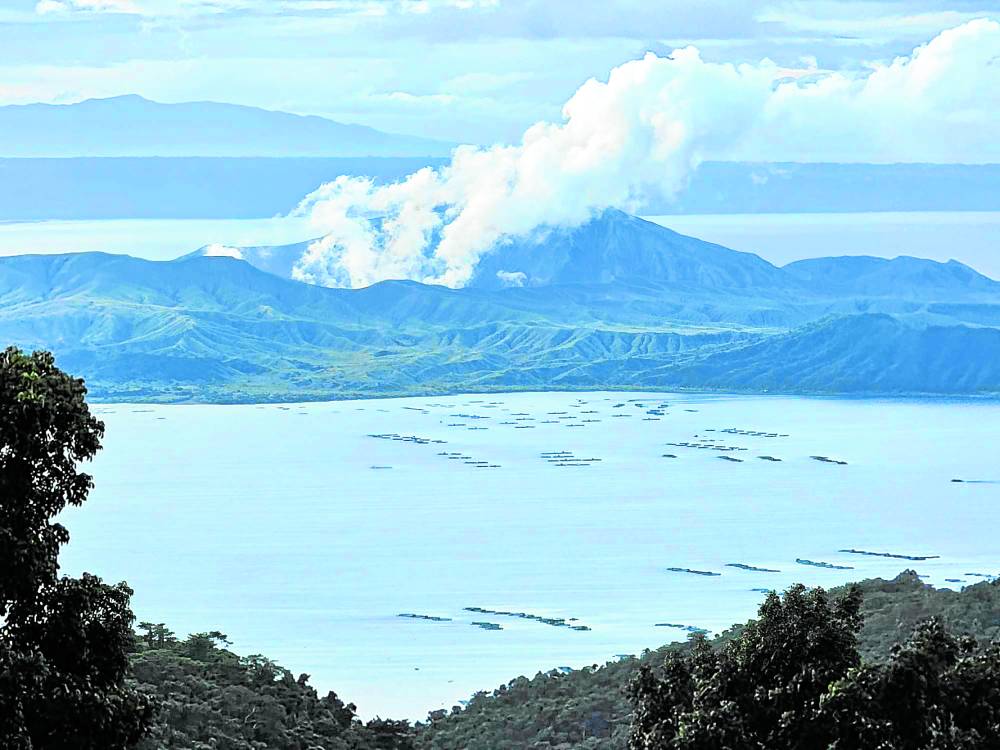
BEAUTY IN A LAKE This photo, taken on October 24, 2023, shows the scenic view of Taal Volcano from Tagaytay City, Cavite. It portrays calmness amid its continued emission of toxic gases. —MARLON MALLARI/CONTRIBUTOR
LUCENA CITY – Taal Volcano in Batangas province recorded one weak phreatic, or steam-driven, eruption on Monday night, June 24, according to the Philippine Institute of Volcanology and Seismology (Phivolcs).
In an advisory issued at 1:15 a.m. Tuesday, Phivolcs said the two-minute event was recorded at 9:30 p.m. and 9:32 p.m.
“The event produced steam-laden plumes that rose 600 meters above the Main Crater before drifting west,” the agency reported.
State volcanologists also said the “weak phreatic activity is likely driven by the continued emission of hot volcanic gases at the Taal Main Crater and could be succeeded by similar events.”
“The background levels of volcanic earthquake activity and ground deformation detected at Taal indicate that unrest is unlikely to progress into [a] magmatic eruption,” it added.
At least one volcanic tremor that lasted 36 minutes was recorded at Taal Volcano in the past 24 hours.
The latest activity at the main crater showed a “voluminous emission” of 4,641 metric tons of sulfur dioxide, which rose to 2,100 meters and drifted southwest. The emissions have averaged 4,641 metric tons per day since June 20, the Phivolcs said.
“Nonetheless, average [sulfur dioxide] emissions since January this year remain high at 7,967 [metric tons] [per] day,” it added.
According to Phivolcs, Taal Volcano is still at alert level 1, or a low level of volcanic unrest.
The agency reminded the public that Taal Volcano remained in an “abnormal condition” and “should not be interpreted to have ceased unrest nor ceased the threat of eruptive activity.”
Local government units are advised to continuously monitor and assess the preparedness of their communities and undertake appropriate response measures to mitigate hazards that could be posed by long-term degassing and related phreatic activity, authorities said.
“Civil aviation authorities must advise pilots to avoid flying close to the volcano as airborne ash and ballistic fragments from sudden explosions and wind-remobilized ash may pose hazards to [aircraft],” the Phivolcs added.

